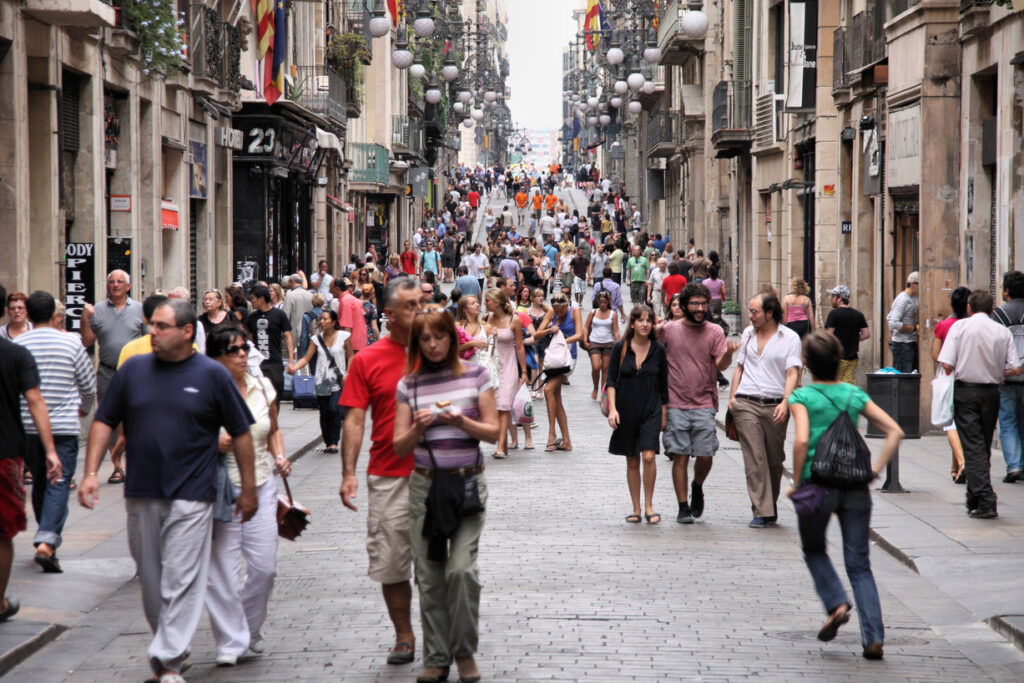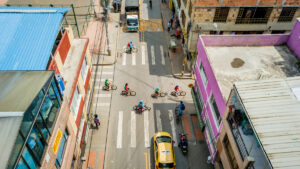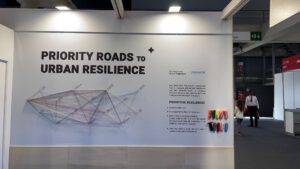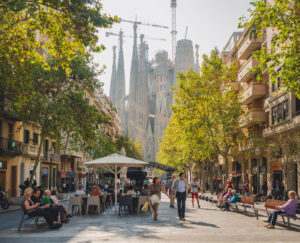What kinds of urban centres will protect the health of its residents? The roundtable series “Sant Pau Dialogues: health and society” focused on this question during the second debate, which took place on the 20th of October. Organised in the framework of UN-HABITAT’s Urban October, the conversation brought together different expert voices from the fields of medicine, research, and land use planning to share knowledge and proposals to improve health in urban settings.
The impact of urban planning on the health of city residents and new urban models were some of the issues on the table during the session that was moderated by Rosa Suriñach, Coordinator of Partnerships, Outreach and Advocacy at UN-HABITAT. The expert panel included: Alfons Torrego, Clinical Manager of Pneumology at the Hospital de la Santa Creu i Sant Pau; Lorena Perona, Urban Planning Service Architect in the Department of Infrastructure and Natural Spaces of the Barcelona Provincial Council, and Mark Nieuwenhuijsen, Director of the Urban Planning, Environment and Health Initiative at ISGlobal.
The debate began with a shared reflection on the grave health consequences of high levels of air pollution, a situation that affects many European cities that do not meet the World Health Organisation recommended limits. Referring to the results of scientific studies, Mark Nieuwenhuijsen, affirmed that more than 1,000 people die in Barcelona every year due to causes related to air pollution. “Another 600 residents pass away as a result of conditions that can be attributed to noise, and another 300 people suffer the same fate for lack of sufficient green space,” he signalled. Speaking from a medical context, Alfons Torrego confirmed that healthcare professionals have detected a notable and progressive increase in cases of respiratory illness such as asthma and chronic bronchitis. “One in every five cases of lung cancer occur in non-smokers”, he sentenced. He also pointed out the children who live in areas affected by high-density traffic are more likely to develop asthma or other respiratory conditions.
“These statistics are cause for concern, and that is why public administrations have been working for years to integrate health criteria as an unnegotiable part of the urban planning process,” architect Lorena Perona explained to participants. The urgent need for change became crystal clear last year when public health authorities eased mobility restrictions after the first wave of the Covid-19 pandemic. She continued by saying, “At that time, it became evident that certain urban areas could not absorb the volume of people permitted outdoors while still maintaining recommended social distances to lower the risk of contagion.” Consequently, it was necessary to activate a new form of urban planning, more tactical and focused on simple, low-cost interventions carried out in record time. In her opinion, the public spaces that are planned with health criteria are more likely to favour social equity.

Fortunately, there are already precedents in transforming cities to promote the health and well-being of residents. Mark Nieuwenhuijsen referred to new urban models as a means to shape urban planning decisions in such a way that pedestrians, active transportation, and social uses of public space are prioritised over motorised vehicles, which have long benefited from support infrastructures (roads, parking, etc.) that occupy a disproportionately large amount of city land. “Some examples include the case of Barcelona’s superilles, the so-called 15-minute city in Paris, and the experiences of other European cities that have gone so far as to eliminate the circulation of combustion vehicles in certain zones,” he stated. “With these strategies, it is possible to reduce air pollution, noise, and favour the physical activity of residents”, he added. Alfons Torrego also recognised the benefits of using green spaces for exercise, as shown in a study of asthma patients in London.
Despite these findings, changes in the design or use of space are not free from controversy. That is why, according to Lorena Perona, it is important to evaluate the needs of the population in the early stages of any project. Likewise, it is essential to create opportunities for public participation in urban planning processes. All three speakers agreed on a key point: changing the model of a city is not easy, and implementing initiatives to remove cars from urban centres must be accompanied by significant improvements in public transportation and viable solutions for people who must enter and leave the city on a daily basis.
The session ended with a consensus on the importance of training professionals in different spheres in relation to these questions while creating spaces for reflection and sharing, such as this dialogue.
Originally published in https://santpau.blog/en/cities-of-the-future-healthy-cities/






